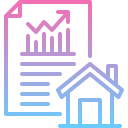Why Forecasting Future Regional Housing Affordability Matters
We look past average prices and headline mortgage rates to analyze payment-to-income ratios, rent burdens, tax and insurance costs, and commuting expenses. Forecasting future regional housing affordability requires this full basket of costs, not just listing prices.
Why Forecasting Future Regional Housing Affordability Matters
A three percent rate shift means different things in Boise versus Boston. Land constraints, wage growth, property taxes, and insurance premiums diverge sharply by metro. We forecast affordability region by region, respecting unique local dynamics and policy environments.


